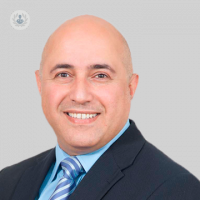Treating staghorn stones with percutaneous nephrolithotomy (PCNL)
Escrito por:Staghorn stones are a type of kidney stone and are characterised by their branching shape. Often, they occur in people who have reoccurring UTIs and will often need to be surgically removed. Highly-esteemed consultant urologist Mr Aza Mohammed discusses the most common method used to remove the stones, thanks to a procedure called percutaneous nephrolithotomy (PCNL).

How serious is a staghorn kidney stone?
Large stones in the kidneys are frequently encountered by urologists. They are named staghorn stones because they fill the inside of the kidney like a staghorn. These stones are usually associated with an array of complications such as infections and pain. Ultimately, if left untreated, they may lead to kidney damage due to the slow erosion of the kidney from the inside.
How are staghorn stones diagnosed?
These stones are usually identified when a scan, either an ultrasound or CT scan, is performed to investigate symptoms but they can sometimes be asymptomatic and identified incidentally.
Once referred to the hospital, your urologist will arrange a CT scan, if one has not already been done, and a urine test, as these stones are frequently associated with urinary tract infections. These infections should be promptly treated before anything else. If there is suspicion that the kidney function is affected by the stone, your urologist will arrange a nuclear medicine scan to assess the remaining function in the kidney and to see whether the kidney can be salvaged.
How do you get rid of staghorn kidney stones?
These stones are most commonly treated with percutaneous nephrolithotomy or PCNL. The operation is performed as keyhole surgery, under general anaesthesia. It involves making a small incision (1-1.5cm) in the loin to create an endoscopic tract from the skin to the kidney and to allow the instrument to reach the kidney under X-ray screening. Once the stone is visualised, it will be fragmented and removed using a special device. At the end of the operation, you might have a tube coming out of the kidney, commonly known as a stent, to ensure urine flows unobstructed and this will be taken out shortly afterward.
How risky is PCNL?
The operation is associated with some risks such as infection, bleeding, and injury to adjacent organs, although they don’t occur very frequently. The operation might require one night stay in the hospital to ensure that there is no bleeding.
If you would like to know more about percutaneous nephrolithotomy, you can book a consultation with Mr Aza Mohammed by visiting his Top Doctors profile.


